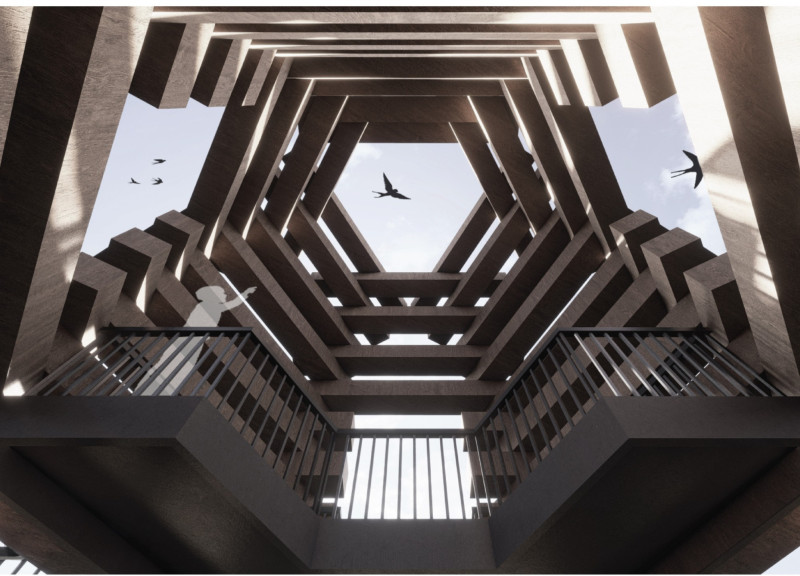5 key facts about this project
Central to the project’s concept is its multifunctionality, allowing diverse activities to coexist within a single spatial framework. The architecture promotes an open layout that encourages interaction and social engagement among users, a crucial element in today’s urban environments where communal spaces are valued. The strategic placement of common areas, such as gathering spaces and green zones, enhances the usability of the building, inviting visitors and inhabitants alike to partake in shared experiences.
The design integrates natural light as a critical component, carefully considering the orientation of windows and open spaces to maximize daylight penetration. This approach not only contributes to the well-being of occupants but also reduces reliance on artificial lighting, making it an energy-efficient choice. The thoughtful arrangement of vertical and horizontal planes creates a rhythmic interplay of light and shadow, enhancing the overall sensory experience within the structure.
Materiality plays an essential role in defining the character of the project. A careful selection of sustainable materials reinforces its ecological footprint while celebrating local craftsmanship. Timber, brick, glass, and steel are among the primary materials used, each contributing to the project’s overall visual language. The use of timber not only brings warmth to the interior spaces but also serves as an excellent insulator. Brick contributes to durability and maintenance ease, while the incorporation of large glass panels facilitates a visual connection between interior and exterior, framing views of the surrounding landscape.
Architectural details, from the carefully considered joinery to the landscaping elements, reflect a commitment to quality and attention to detail. The integration of outdoor spaces through terraces and balconies enhances the building's relationship with nature, allowing occupants to experience a seamless transition between the interior and exterior. Green roofs and vertical gardens further strengthen this connection, providing ecological benefits and increasing biodiversity.
Unique design approaches characterize the project, particularly in its responsiveness to the geographical location and climate. The structure is designed to withstand local weather patterns while offering passive climate control through strategically placed overhangs and thermal mass techniques. This foresight not only enhances inhabitant comfort but also contributes to the project’s energy efficiency.
The architectural ideas explored in this project represent a forward-thinking approach to design, embracing innovation while maintaining a respect for established practices. The outcome is not merely a building but a holistic environment that nurtures its users and community. The architectural plans and sections illustrate the thoughtful layout and spatial organization, offering insights into how each element works cohesively to support the overall vision.
For those interested in a comprehensive understanding of the project, detailed architectural plans, sections, and design visuals are available for review. Exploring these elements can offer deeper insights into the considerations that shaped this architectural endeavor, highlighting its thoughtful integration of form, function, and sustainability. Engaging with these resources will provide readers with a clearer vision of how this project contributes to contemporary architectural discourse while meeting the needs of its users and the environment.


























